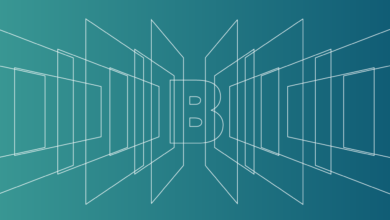Quantum Encryption: Pioneering Cybersecurity Advancements

The digital age relies heavily on secure communication, and cryptography plays a crucial role in protecting sensitive information. Traditional cryptography uses complex mathematical algorithms to achieve this, but the emergence of quantum computers poses a significant threat to its effectiveness. Fortunately, quantum encryption, also known as quantum cryptography, offers a revolutionary solution to this challenge.
Image Credit: PopTika/Shutterstock.com
Quantum encryption makes use of the bizarre laws of quantum mechanics to create unbreakable communication channels. It takes advantage of properties such as superposition (existing in multiple states simultaneously) and entanglement (linked particles sharing a fate) to detect eavesdropping attempts.1,2
This article delves into the latest developments in the field of quantum encryption and its potential applications across domains. It also discusses concerns related to the implementation and scalability of this technology, underscoring the need for further research and development to fully unlock its capabilities.
Evolution of Quantum Encryption
The idea of quantum encryption dates back to the 1970s when Stephen Wiesner developed innovative ideas for quantum coding and quantum money. However, the true foundation of quantum encryption was introduced in 1984 by Charles Bennett and Gilles Brassard. They proposed the concept of quantum key distribution (QKD), which focused on establishing a secure key for encryption using the unpredictable nature of quantum particles rather than encrypting the data itself. The initial protocols for QKD relied on photons to detect eavesdropping by exploiting properties like superposition and entanglement.1
Over the past few decades, there have been significant advancements in the field of quantum cryptography. Researchers, such as Artur Ekert, proposed new protocols based on Bell’s inequalities, which helped solidify the theoretical foundations of quantum cryptography. Initially, the focus was on overcoming technical obstacles as early quantum key distribution (QKD) systems were bulky and expensive. However, advancements in photonics and miniaturization of quantum devices allowed for improved efficiency and scalability. 2
Currently, researchers are achieving record-breaking secure key rates and transmission distances and are exploring alternative platforms like entangled microwave photons for long-distance communication. This continuous evolution, driven by relentless research efforts, is paving the way for a future where quantum encryption becomes a practical reality.
Applications of Quantum Encryption
Quantum encryption holds immense potential across various domains, particularly in secure communication networks. It utilizes the unique properties of quantum mechanics, such as superposition and entanglement, to ensure the confidentiality and integrity of transmitted data. This technology has various applications in sectors ranging from finance and healthcare to government and defence, where the protection of sensitive information is of utmost importance.
In the finance sector, banks and financial institutions deal with highly sensitive data. Quantum encryption can safeguard online transactions, interbank communication, and customer information, safeguarding financial data from unauthorized access and manipulation.2,4
Quantum encryption can also safeguard infrastructure systems like power grids, transportation systems, and communication networks from cyberattacks and prevent disruptions.2 Moreover, quantum encryption is used by government agencies and defense organizations to secure classified communications and critical infrastructure against cyber threats and espionage.2
Healthcare organizations can use quantum encryption to protect electronic medical records and patient information, ensuring privacy and compliance with data protection regulations. A recent study published in the Journal of Medical Internet Research explores the potential of quantum cryptography for protecting electronic health information, highlighting its role in protecting patient privacy and ensuring trust in healthcare systems.9
As quantum technology advances, the applications of quantum cryptography are expected to expand to more complex areas, for example, to create secure voting systems, protect intellectual property, and enable secure communication for autonomous vehicles.
Advantages of Quantum Encryption
Quantum encryption has several advantages over traditional methods of cryptography. Firstly, it offers unbreakable security as traditional methods rely on the complexity of factoring large prime numbers, which quantum computers can potentially break. However, quantum encryption exploits the fundamental laws of physics, rendering it theoretically unbreakable.4,7
Secondly, quantum encryption provides tamper detection. Any attempt to intercept or tamper with quantum communication will disrupt the entangled particles, alerting the sender and receiver. This provides an additional layer of security compared to traditional methods.2,4
Moreover, quantum encryption enables secure key distribution over long distances by using quantum entanglement, paving the way for global-scale secure communication networks. This feature is particularly valuable in scenarios where traditional key exchange mechanisms are vulnerable to interception or tampering.4
Challenges and Concerns
Despite its promise, quantum encryption faces several challenges to widespread adoption. One significant hurdle lies in scalability and compatibility with existing infrastructure. Implementing quantum encryption protocols requires specialized hardware and infrastructure, which may pose logistical and financial constraints for organizations transitioning from classical to quantum-secure systems. Moreover, quantum communication works best over fiber optic cables, which limits its reach. Thus, sending quantum signals over long distances remains a challenge.2,5
Additionally, quantum encryption methods are vulnerable to implementation flaws and technical limitations. Practical implementations frequently encounter challenges including quantum noise, channel loss, and photon detection efficiency, which can compromise the security and dependability of quantum-secure communication systems.2
Researchers are actively addressing these challenges, and they believe that advancements in photonics, miniaturization of quantum devices, and the development of new protocols will pave the way for a more practical and scalable future for quantum encryption.
Latest Research and Developments
Recent progress in quantum encryption research has been aimed at overcoming current obstacles and extending the practical uses of quantum-secured communication. Significant breakthroughs include the investigation of innovative QKD protocols that provide improved security and efficiency.2,3
In a recent study, researchers demonstrated a new QKD protocol that achieved a record-breaking secure key rate of up to 50 kilometers over standard telecom fibers.2 Another study published in Nature Photonics demonstrated a new QKD protocol that exceeded secure key rates of 110 Mbps over a distance of 10 kilometers. This represents a key milestone in quantum encryption and brings practical deployments in real-world scenarios closer to reality.8
In another breakthrough, researchers from the University of Science and Technology of China achieved a new record for secure key distribution distance using a satellite-based quantum communication link. The team was able to distribute secure keys over a distance of 1200 kilometers at a rate of 0.0034 bits per second, demonstrating the possibility of establishing secure quantum communication infrastructure over vast distances.6
Researchers at the Los Alamos National Laboratory are developing a quantum network based on entangled microwave photons. This network has the potential to enable long-distance quantum communication, opening up new possibilities for secure communication and data transmission.2
The National Institute of Standards and Technology (NIST) is working on standardizing cryptographic algorithms that are resistant to quantum computing. This will make it easier to transition to post-quantum cryptography in the future.
Recent developments in quantum error correction techniques have also improved the resilience of quantum encryption against noise and imperfections in real-world quantum systems.10 These advancements indicate that quantum encryption is transitioning from theoretical promise to practical implementation.
Researchers are actively working on overcoming technical challenges such as reducing the complexity and cost of quantum devices, extending the reach of quantum communication networks and integrating them seamlessly with existing classical communication infrastructure.
Future Prospects and Conclusion
The future of quantum encryption holds immense promise as researchers continue to push the boundaries of quantum technology. With ongoing efforts to enhance the scalability, reliability, and practicality of quantum encryption protocols, the prospect of a quantum-secure internet ecosystem becomes more realistic.2,4
Furthermore, the emergence of quantum computing has presented both a challenge and an opportunity for quantum encryption. While traditional cryptographic systems are vulnerable to quantum computers, the development of new cryptographic primitives and protocols that are resilient to quantum attacks is now possible. As quantum encryption becomes more accessible, it is poised to revolutionize cybersecurity across industries, ushering in a new era of secure and trustworthy communication.
In conclusion, quantum encryption is a cutting-edge cybersecurity technology that provides unmatched security and protection against the evolving threats posed by quantum computing. Despite obstacles, constant research and innovation are vital in unlocking the full capabilities of quantum encryption. This will bring in a future where the principles of quantum mechanics will ensure the privacy and security of data.
References and Further Reading
- Bennett, C. H., & Brassard, G. (1984). Quantum cryptography: Public key distribution and coin tossing. Proceedings of IEEE International Conference on Computers, Systems and Signal Processing, 175-179. https://doi.org/10.48550/arXiv.2003.06557
- Vatsal Vasani, Kumar Prateek, Ruhul Amin, Soumyadev Maity, Ashutosh Dhar Dwivedi, Embracing the quantum frontier: Investigating quantum communication, cryptography, applications and future directions, Journal of Industrial Information Integration, 39, 2024, 100594. https://doi.org/10.1016/j.jii.2024.100594
- Yin, J., Cao, Y., Li, Y. H., Liao, S. K., Zhang, L., Ren, J. G., & Pan, J. W. (2022). Quantum communication with synchronous satellites. Nature, 596(7871), 548-553.
- Pirandola, S., & Andersen, U. L. (2020). Quantum cryptography. Reviews of Modern Physics, 92(3), 035002.
- Lucamarini, M., & Yuan, Z. L. (2021). Practical challenges in quantum key distribution. Light: Science & Applications, 10(1), 1-15. https://doi.org/10.48550/arXiv.1606.05853
- Liao, S. K., Li, Y. H., Yin, J., Zhao, Q., Liu, H., Zhang, L., & Pan, J. W. (2017). Satellite-to-ground quantum key distribution. Nature, 549(7670), 43-47. https://doi.org/10.1038/nature23655
- Pirandola, S., & Weedbrook, C. (2019). Advantages of coherent protocols for Gaussian quantum key distribution. Physical Review X, 9(3), 031065.
- Li, W., Zhang, L., Tan, H. et al. High-rate quantum key distribution exceeding 110 Mb s–1. Nat. Photon. 17, 416–421 (2023). https://doi.org/10.48550/arXiv.2307.02364
- Chen Y, Esmaeilzadeh P. Generative AI in Medical Practice: In-Depth Exploration of Privacy and Security Challenges J Med Internet Res 2024;26:e53008. https://doi.org/10.2196/53008
- NIST to Standardize Encryption Algorithms That Can Resist Attack by Quantum Computers. (2023, August 24). NIST.



